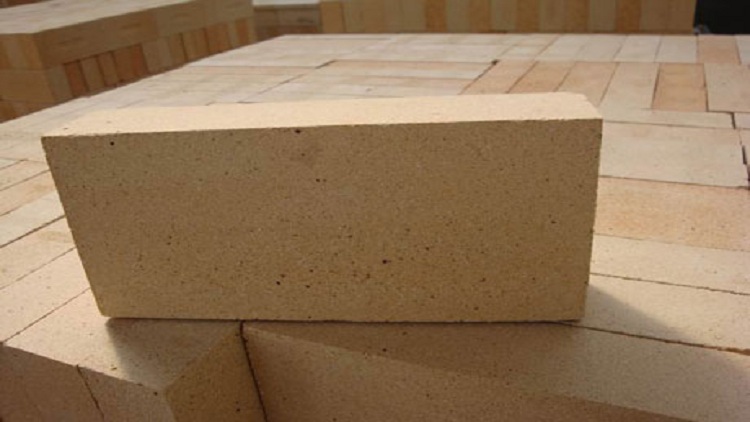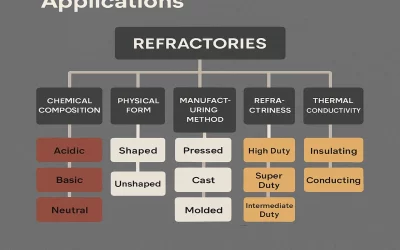Brief about Refractory Materials
Refractory materials are artificial nonmetallic substances with a refractory temperature of 15800C or more.
Organic ores and diverse products created for specific purposes and needs through specific processes are examples of refractory materials. It offers high-temperature mechanical qualities as well as a good resilient modulus.
Iron and steel, nonferrous metals, glasses, concrete, ceramic, petrochemical, machine, boilers, light industry, power production, military industry, and other industries use refractory materials.
It is a necessary and basic material for the production and maintenance of numerous industries and the advancement of technology.
Things to consider before hiring a Refractory binder
The fabrication of shaped refractory requires five procedures: input materials preparation, raw material combining, shaping, drying, and burning.
Binders for shaped refractory are available in various formulations that enhance strength properties for crushing, handling, and drying procedures, hence reducing breaking and flaking.
Phenolic Resin, Polyvinyl Alcohol (PVA), Molasses, Dextrin, Lignosulfonate, Carboxyl Methyl Cellulose (CMC), Starch, and other ingredients are included. As a result, binder selection can be difficult, and producers must consider various factors to determine which binder is best suited to their material and procedure.
Choosing the appropriate match
The refractory binder chosen must be appropriate with the qualities of the refractory raw resources utilized. For example, acidic binders including phosphoric acid, aluminum dihydrogen phosphate, and aluminum sulfate can be employed in non-burning refractory materials such as aluminum silicate and corundum.
Even alkaline or mild bases, such as magnesium, magnesium aluminum, magnesium chromium, aluminum-magnesium, and so on, can be used.
Alkaline adhesives, such as water glass, sodium hexametaphosphate, sodium tripolyphosphate, and others, should be used in non-burning refractory goods. In addition, pitch, phenolic resin, and other carbon binders can be used in carbon-enriched or silicon carbide non-burning refractory materials.
Firing the product is crucial
Provisional binders, like dextrin, pulp waste liquid, hydroxymethyl cellulose, starch, hydroxymethyl cellulose, and so on, can be used in machine-pressed or ramming sintering refractory materials. Non-fired machine-pressed or rammed goods should have a durable binding agent.
Adaptability is a must!
When selecting a binder for refractory manufacture, the adaptation of the construction process must be addressed. For example, binders that can induce hydration joining, chemical bonding should be used in castables.
Plastic and ramming substances must be chosen as gas-hardening binders capable of producing chemical, covalent, or adhesive bonding.
Other factors to consider
- At both low and high temperatures, it should not interact with refractory mixtures.
- It does not enable the mixtures to adhere to the molds.
- It must release as little residue as possible after firing.
- After crushing, drying, and firing, it does not affect the Bulk Density or Apparent Porosity.
- To achieve uniform density in refractory fire bricks, it must increase the flowability of the mixtures during pressing.
- It is necessary to increase the tensile stability of both green and dried refractory fire bricks.
- Mostly during the burning process, this should easily burn off.
- It must be as cheap as possible.
- It does not affect the bricks’ lasting linear change.
- It cannot be poisonous or pollute the air.
- It does not affect the bricks’ refractoriness.
Why choosing the right binder is important?
The choice of an appropriate binder is critical for increasing production yield and lowering operating costs for refractory companies.
- Improved refractory blend durability and management
- Dry pressed refractory fire bricks with reduced pressing friction.
- Conserving energy
- Quality and process improvement.
- Lubrication is used during the molding process.
- Green and dry bricks’ mechanical properties have been improved.
- Losses were reduced during the handling and drying processes.
Wrapping up!
We are a prominent refractory fire bricks manufacturer in India. We regularly monitor quality and costs to ensure that our customers always receive the greatest quality at the most competitive price. Also, to know more about soft fire bricks & hard fire bricks, click here!
We have created additives designed specifically for the production of hydraulic pressed refractory fire bricks and plastic formed bricks, and other unshaped refractory products.
Our natural products have zero carbon emissions, are non-hazardous, and are beneficial to the environment.
To know more about What is the difference between soft fire bricks and hard fire bricks?




